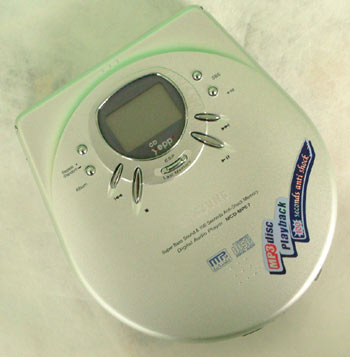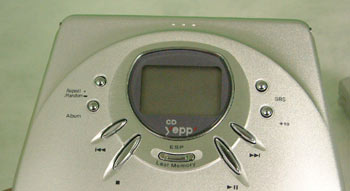I can say with almost 100%
certainty that there will be two killer X-mas gifts this year. The first will be
Microsoft's Xbox Gaming System (assuming it's out in time) and the second will
be MP3-CD players. If you don't get one of these killer presents in your
stalking this year then you've definitely crossed Santa in a bad way.
In terms of MP3-CD players we've already looked at SonicBlue's superbly outfitted RioVolt player. This time we'll be exploring Samsung's aluminum-topped MCD-MP67 CD Yepp. In an odd take on the general rule of thumb, rather than the top cover of the CD-Yepp being made to look like aluminum, it is actually aluminum made to look like plastic made to look like aluminum... ironic in a way don't you think?
Impressions, impressions.
Of course the use of aluminum ensures a lightweight and
attractive case for the MP3-CD player - but be warned if you're prone to
abusing your gear. Unlike plastic, aluminum will dent if badly dropped or bumped around.
Seeing as my old-school Sony DiscMan is just now
starting to die (it's circa 1992) I thought it would be a good time to upgrade
to the newest generation of portable CD-players entering the market. After all,
MP3-CD players have the best of both worlds - CD's and MP3 compatibility.

The CD-Yepp, as the MCD-MP67
is affectionately known, is a bit less advanced than the RioVolt as there
doesn't appear to be any way of upgrading the firmware. However that's not to
say it's limited in its capabilities. The CD-Yepp can tackle standard audio CD's, CD-R's
and CD-RW's.
Moving Music onto the CD-Yepp
The
only way to get you personal MP3's into the CD-Yepp is to burn a CDR
or CDRW with your favorite music files. The CD-Yepp, like all portable MP3-CD
players offers no onboard solid state flash memory storage. Basically anyone armed with a CD-RW burner
can literally just use the same disc over and over for almost infinite storage, at
little cost.
Once you
drop a CDR full of MP3's into the CD-Yepp it takes about
30 seconds or so from power up to play. In that time, the player
recognizes the CDR media and indexes all the MP3 tracks that are stored on
the disk. The time to play may vary slightly depending on how many files
need indexing.

The
controls on the player are fairly standard, with a few differences here and
there to accommodate the large number of files that can potentially be stored on
a CDR diskc - roughly 170 4MB MP3 files can be stored on a
single disc.
The keys you aren't likely to recognize are the "Album" key, and
"+10" key. The album key tells the player to go
through the files on the disc by folder. So if you are listening
to a song in the first folder, you can use the album key to
jump ahead to another folder, one which may hold music by a different artist
for example.
The "+10" key allows you to quickly jump through MP3's at a
rate of ten, instead of advancing one by one. It's a handy key for
those times when you are going through a hundred or so songs looking for
track 90.

